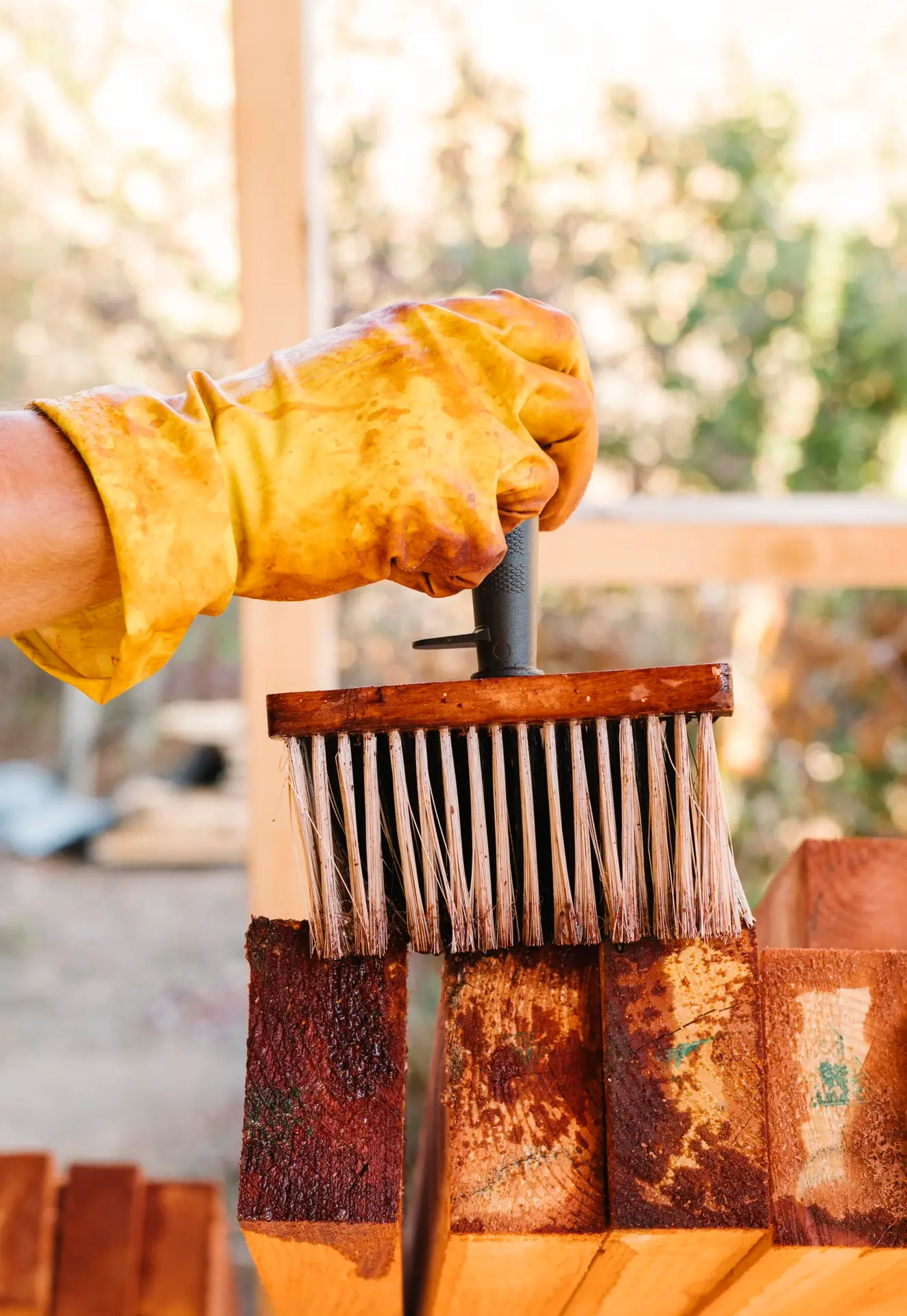How Many Coats of Stain Should I Use?
When deciding how many coats of deck stain to apply, it’s important to follow the general guideline provided by manufacturers. Typically, most recommend applying two coats for a better finish and durability, but this can vary based on several factors. For instance, the deck size, shape, and the wood type can influence how much stain is needed. If the deck is in good condition, you might only need one coat. However, a more worn or porous deck will often require two coats to ensure the stain is properly absorbed.
It’s not always a one-size-fits-all approach. Always check the stain label or the manufacturer’s website for the product specifics regarding coverage. Calculating the total square footage of your deck is essential to determine how much stain you’ll need. Measure the length and width of the deck, multiply to get the total square feet, and then check the coverage rate listed on the stain formula. This will give you an estimate of the number of gallons you need to complete the job. Keep in mind that it’s always a good idea to purchase a little extra stain to avoid running out in the middle of your project.
How Long Should You Wait to Put a Second Coat of Stain on a Deck?
The timing of applying a second coat of stain on your deck is crucial to get the best results. After applying the first coat, it’s essential to wait at least 4 hours before applying the second coat. However, if possible, you should allow the first coat to completely dry, and waiting up to 24 hours is often the best practice. This ensures the stain has enough time to penetrate and bond to the wood surface.
If you try to apply the second coat too soon, the stain may not adhere correctly, resulting in an uneven finish and uneven color. In some cases, it could even lead to peeling. Patience is essential, as walking on a newly stained deck or applying the second coat prematurely can affect the stain‘s ability to properly bond to the wood. Giving it the proper time helps ensure a long-lasting, durable finish for your deck.
Can You Put Too Much Stain on a Deck?
Yes, over-applying stains on your deck can cause several issues. When you apply too much stain, it can leave behind a sticky or tacky surface that never fully dries. This may lead to caked-up stains that affect the overall look and performance of the finish. If the stain does not properly adhere to the wood, it can result in poor adhesion, causing bubbling or peeling over time.
To avoid these problems, it’s essential to follow the manufacturer’s instructions and use proper application techniques. Make sure to check the coverage rates and apply the stain evenly to ensure the wood absorbs it correctly. By doing this, you’ll prevent any long-term issues that can arise from too much stain on the deck.
How Many Coats of Stain Does It Take to Darken?
The number of coats required to darken your deck depends on a few factors like the wood type, the stain type, and the condition of the wood. Typically, one coat will slightly darken the wood, but for a deeper color, two coats are often recommended. However, achieving the perfect level of darkness is a balancing act. The natural color of the wood also plays a big role. For example, lighter-hued woods like pine will darken less compared to woods like sultry mahogany, which can absorb stain more easily for a deep, rich finish.
It’s important to remember that multiple applications of stain can help darken the wood further, but applying too many layers can backfire. Too much excess pigment can lead to unsightly splotches and build-up on the surface. It’s best to follow the manufacturer’s instructions and stop once you’ve reached the desired color without risking a sticky or uneven finish.
Key Takeaways on How Many Coats of Deck Stain Should I Use?
- Manufacturers generally recommend applying two coats of stain on a deck for optimal results.
- To estimate the amount of stain needed, calculate the deck square footage and check the coverage per gallon on the label.
- After the first coat, wait at least 4 hours before applying the second coat to ensure the newly stained surface is completely dry.
- One coat will slightly darken the wood, while two coats create a deeper color and darker wood tone.
- Avoid over-applying a thick layer that may not soak into the wood, leading to uneven finish, poor adhesion, bubbling, or peeling.
- Stain overload and too many coats can cause an uneven, blotchy appearance.
- Key factors like wood type, current condition, and the desired level of darkness help you find the striking balance for a consistent finish.
Is a Second Coat Worth It When Deck Staining?
Applying a second coat of stain during deck staining is often a crucial step for achieving a long-lasting finish. While a single coat may seem sufficient in some cases, a second coat can enhance both the appearance and the durability of your deck. The additional coat helps provide extra protection against the elements, keeping your deck looking great and offering better maintenance in the long run.
Whether or not a second coat is worth it depends on various factors like the type of stain you’re using and the condition of the wood. If you’re aiming for a beautiful appearance and want to ensure the stain lasts through changing weather, the second coat offers long-term benefits. It not only boosts the appearance but also strengthens the wood, making it more resistant to wear and tear.
Oil-Based vs. Water-Based Stain
When deciding between oil-based and water-based stains, it’s important to understand the key difference between the two. Oil-based stains are known for their ability to penetrate deeply into the wood, providing a rich color and a shiny finish. This type of stain offers longer-lasting results, as it provides excellent protection against moisture and UV damage, making it ideal for harsh weather conditions. However, oil-based stains can take longer to dry and emit stronger fumes during application.
On the other hand, water-based stains are eco-friendly, dry faster, and emit fewer fumes, which can be beneficial for those looking for a more environmentally conscious option. They are also easy to apply, and they tend to be less messy, making the cleanup process simpler. When applying either type of stain, be sure to follow the manufacturer’s instructions carefully, especially regarding the second coat. Pay attention to the exact instructions on the stain can to ensure the stain is applied correctly for the best outcome.
Enhanced Protection and Longevity
One of the primary reasons to apply a second coat of stain is to enhance the deck’s protection and longevity. Adding an additional layer of stain creates an extra defense against elements like moisture and UV rays, which can cause significant damage over time. The second coat provides an extra barrier that helps prevent issues like cracking, warping, and fading, which are common in decks exposed to harsh climates or areas with a high UV index.
By applying two coats, you’re effectively preserving the wood’s integrity, ensuring that your deck lasts longer despite the wear and tear it faces. This significant difference in protection can go a long way in extending the lifespan of your deck, helping it stand up to the elements and look good for many years.
Improved Quality of Finish
Applying a second coat of stain can significantly enhance the overall quality of the finish on your deck. While a single coat may provide adequate coverage, it’s the second layer that ensures uniform coloration and helps even out any inconsistencies or imperfections left by the first coat. This additional coat improves saturation, creating a richer, more vibrant appearance that enhances the visual appeal of your deck.
By paying attention to detail and applying a second coat, you can achieve a smoother, professional-looking finish that adds value to your property. It also helps prolong the deck’s lifespan by offering better protection against wear and tear, making the deck look fresh and well-maintained for longer.
Application Process and Time Investment
The application process for adding a second coat of stain is relatively straightforward, but the time required can vary depending on the type of stain, the condition of the deck, and environmental factors like temperature, humidity, and ventilation. After the first coat is applied, you will typically need to wait anywhere from an hour to a day for proper drying time. It’s important to plan accordingly as these factors can influence the drying time and ease of the initial application.
While the second coat may take a bit more effort compared to the first, the additional investment of time will pay off in long-term benefits. Proper preparation steps, such as ensuring a smoother surface and organizing your tools, can make the process more efficient and seamless. With careful planning, this task can be completed in less time than expected, making it a manageable and worthwhile project for anyone familiar with the process.
FAQs
Q: Can I apply a second coat of stain immediately after the first coat?
It is essential to allow the first coat of stain to dry completely before applying the second coat. The type of stain and weather conditions can affect the drying time, but generally, you should wait at least an hour to a day. Applying the second coat too soon can result in uneven coverage and poor adhesion, leading to a less durable finish.
Q: Is it necessary to sand the deck between coats of stain?
While sanding between coats of stain is not always necessary, it is recommended if there are rough patches or imperfections left by the first coat. Lightly sanding the surface after the first coat has dried can help create a smoother finish for the second coat, ensuring a more even appearance. This step is important, especially if the deck has been exposed to the elements.
Q: How often should I reapply stain to my deck?
The frequency of restaining your deck depends on several factors, such as the type of stain, climate, and foot traffic. Typically, it is recommended to restain your deck every 2-5 years to maintain its appearance and protection. Regular inspection and maintenance will help you identify when it’s time for reapplication to keep the deck looking its best.

